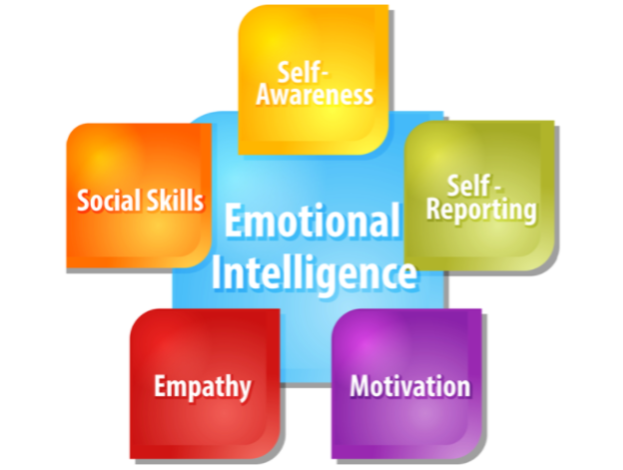This question forms the basis of our discussion in this article and as we go about it, we will look at how to build and practice resilience at work as well as the characteristics that make a resilient worker.
The workplace in the modern era of digital transformation is an ever-changing and sometimes extremely stressful environment.
When the natural resilience that we had as children cannot withstand the pressure, we can, unfortunately, experience trauma and begin to feel helpless and worthless.

Workers need to be resilient to cope and bounce back from challenging situations, most often taking these as opportunities for success.
While there is natural resilience in all of us, adults at the workplace need to nurture adaptive resilience and where it’s missing, get the training necessary to restore it.
One thing studies have proven is that a lack of resilience can be an agent towards stress and anxiety, which most often impact workplace productivity and relationships. Below we also look at how to build resilience at work dealing with aspects such as confidence, respect, adaptability and leadership.
Resilience is the fuel that powers us to develop a positive approach to life, making it possible for us to stay motivated in times of adversity and solve problems in the workplace. Therefore, with a resilient mindset, you naturally feel the day-to-day tasks at the workplace are more approachable.
Do you see why resilience is essential in the workplace? Resilience is strength, and you need it to achieve your career goals. In particular, if you have it, you will be able to:

Building resilience at work takes practice, time and self-reflection, making it more of a personal endeavor. The 3 simple ways of building resilience at the workplace are:
Step1: Reduce sources of stress
Step 2: Support responsive relationships
Step 3: Strengthen core life skills.
If you want a comprehensive solution for adults, you can opt for the 7 Cs of resilience. They will help you to:
The 5 key pillars of resilience that you need to understand are: emotional wellbeing, inner drive, future focus, robust social network, and physical health.
By giving and receiving feedback in the workplace, you can discover the areas you need to work on more.
Emotional resilience helps to protect your mind from creating destructive thoughts. You can write down your thoughts and analyze them and start replacing destructive thoughts with healthier ones.
When you develop inner drive, you stop feeling that projects are taking forever. The best way to be self-driven is to create specific, measurable, attainable, relevant, and time-bound goals (SMART goals).
Developing mental health resilience is critical to achieving healthy responses. The process starts by thinking logically to find out what you know and what you don’t know. It also includes recognizing that you cannot change the past, which is demonstrated by taking responsibility for your actions and emotions.
It takes time to develop healthy relationships and you need to focus on building genuine connections, addressing toxic relations, and finding or becoming a mentor.
7. Support physical wellbeing
Your physical wellbeing is closely related to the wellbeing of your emotional and mental state. So, to boost your productivity, you need to promote the right work-life balance.
Ongoing development plays a crucial role in creating resilience. Have a professional development plan that prevents the development from feeling overwhelming.


What are some examples of resilience at work? Resilient employees have an attitude to stay despite the difficulties in the workplace.
Other signs that you are making objective decisions at the workplace and do not allow your emotions to rule you are:
As we have seen, building resilience at the workplace is more of a personal endeavor. However, managers and leaders can get involved by providing the required training and tools to make the process much more comfortable, making organizational culture a workplace culture.
Resilient employees build relationships at the workplace that are characterized by effective communication. The workers help each other to achieve the desired level of success. As a result, a resilient employee is a team player.
Personal and professional networks are the best source of support and guidance in times of stress. But it is also a reliable source of nurturing relationships. Since resilient workers can nature the networks, they are great at building trust with colleagues and others. Consequently, they have reliable support systems that help them to manage stress and develop a fighting spirit that makes them unique.
Is resilience in the workplace training necessary? Studies have shown that training positively impacts emotional, mental, physical, and spiritual health.
Group training sessions at the workplace help to develop group understanding. These qualities are useful for promoting cohesion of the employees and promoting team coordination.
The training sessions allow employees to practice some physical tasks. They do this through simulations. If necessary, an observer can be involved to give the right feedback. Cognitive tasks that involve thinking about an imaginary problem and discussing the possible solutions are also great for enhancing employees’ mental capacity.

Resilience at workplace training also helps employees to explore their compelling WHY. The spiritual part of humans wants to find a reason for engaging in whatever they do. The answer can help you align your performance and engagement to aspects of the job that matter to you the most.
There are 5 pillars of resilience, one of which is mindfulness. Possessing these qualities and characteristics has been shown to help individuals work towards developing a resilient mindset.
Mindfulness refers to the condition of being present and engaged with what is currently occuring without giving room to distractions or judgment. When you are aware of your feelings and thoughts, but do not get caught up in them, you can reap physical, spiritual and mental health benefits. Moreover, it plays a role in helping people to manage stress.
Here are the pillars of resilience and how you can cultivate each to aid your workplace resilience.

Confidence comes as a result of such factors as having control and being able to cope. Together, these factors make up what we call the 7 Cs of resilience and is what every employee needs to master to make the workplace an environment worth enjoying.
For example, as you develop better connections at the workplace, you begin to in trust others and in your own capacity. When practiced properly and honestly, it helps you to develop a firm belief in yourself.
You might be interested in the other 7 Cs to see how useful they can be to you as you strive to develop confidence at work.
To remain independent at work, you need to evaluate new opportunities with this goal in mind. As such, building workplace resilience involves showing resilience skills and evaluating your weaknesses and strengths with the purpose of finding practical ways to improve your tenacity.
This is the same skill that is required when contemplating accepting new projects at the workplace or changing jobs.
Consider the company culture and the relationship you are likely to have with your colleagues and the employer. You may need to ask about the ideal working relationship and a shortlist of some of the most successful people in the department or organization.
Since resilient people are future-focused, you will find it easy to ask the right questions and make the best decision if you have become resilient.

The term “emotional intelligence” refers to that ability one has to understand and manage their emotions. From our definition of what resilience is and its application in the workplace, we noted that it empowers individuals to make objective decisions during difficult times that can be highly emotional.
As such, emotional intelligence is a significant component of resilience at work.
The emotional intelligence skills are:
By being able to embrace the nuances of human emotion, you can reap lots of benefits such as a happier workplace and enhanced collaboration among employees.

Respect at the workplace creates a fair environment, reduces stress, improves employee satisfaction, and enhances productivity and collaboration. It also helps organizations to create a positive work culture.
Since respect can be noticed in non-verbal communications, tone of voice, and how people address each other, it is impossible for employees who are not resilient to demonstrate genuine respect.
Colleagues, leaders and managers often do not agree on everything in the workplace. Therefore, one needs to be resilient to be respectful of others without harboring negative feelings.
Here are examples of how resilient leaders and employees can show respect at work:
One of the things you need as a leader is vision which is one of the 6 domains of resilience that was highlighted in the previous topic.
As you look to inspire others via your leadership, note that the following skills will be key:
To demonstrate that you have these skills, you need to listen and learn, communicate, do your best work, take responsibility, and be a role model. You also need to engage everyone, strive for authenticity and become a thought leader. Resilient leaders do not struggle to lead since they are naturally inclined to inspire others to deliver their best at all times.
Many things keep changing in the workplace and you need to be flexible and adapt to the working conditions to succeed. As a resilient employee, you can work in a team or independently and still deliver your best.
If you have any questions about resilience at work or you’d like to know about to start a resilience program for your organization, call The Resiliency Solution today at 919-525-4559.
